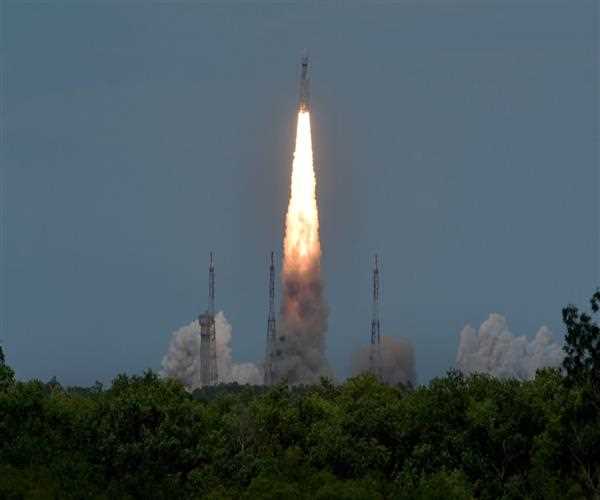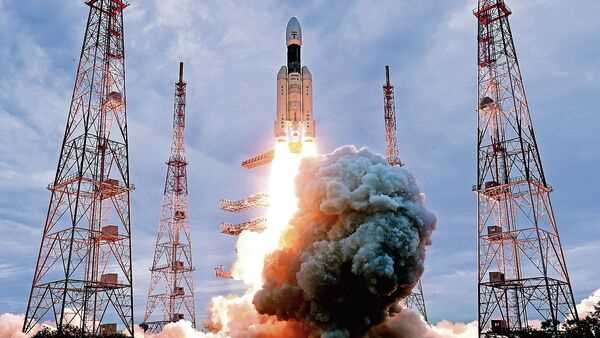
19-Jul-2023 , Updated on 7/19/2023 5:52:36 AM
How important the mission- Chandraayan 3 for India?
Highlights
- Chandrayaan-3 is the third lunar mission by the Indian Space Research Organisation (ISRO), following the successful Chandrayaan-1 and Chandrayaan-2 missions.
- The mission aims to further advance India's capabilities in space exploration and establish itself as a key player in the global space community.
- Chandrayaan-3 is crucial for India as it represents a continuation of its lunar exploration program and a stepping stone towards more ambitious missions, including manned lunar missions in the future.
- The mission will consist of an orbiter, lander, and rover, similar to Chandrayaan-2. It will build upon the technology and lessons learned from the previous mission to improve success rates.
- One of the primary objectives of Chandrayaan-3 is to conduct in-depth scientific studies of the lunar surface, including the composition of the Moon's crust and the presence of water and other resources.
- The mission will also focus on exploring the South Pole region of the Moon, which is believed to contain vast reserves of water ice, potentially valuable for future space exploration and colonization efforts.
- Chandrayaan-3, the third lunar exploration mission by the Indian Space Research Organisation (ISRO), holds immense significance for India. Building on the successes and lessons learned from its predecessors, Chandrayaan-1 and Chandrayaan-2, this upcoming mission aims to further propel India's space exploration ambitions.
Let's see how this mission is important for India
Scientific Exploration and Discoveries
Chandrayaan-3's primary objective is to conduct in-depth scientific research on the Moon, enhancing our understanding of Earth's natural satellite. The mission will involve deploying advanced instruments and payloads, enabling comprehensive mapping, mineralogical analysis, and exploration of the lunar surface. By analyzing the lunar terrain, water ice deposits, and the presence of minerals, Chandrayaan-3 will contribute significantly to our knowledge of the Moon's geology, its origin, and its evolution. These findings will not only broaden our understanding of the Moon but also have implications for future space exploration endeavors.
Technological Advancements
With Chandrayaan-3, India aims to showcase its technological capabilities in the realm of space exploration. The mission will involve developing and testing cutting-edge technologies and systems, including lander and rover components. This pursuit of technological advancements is crucial for India as it strives to strengthen its indigenous space program and compete on a global scale. By successfully executing Chandrayaan-3, India can demonstrate its expertise in complex space missions, paving the way for future interplanetary missions and collaborations with other space agencies.
Economic and Strategic Benefits
Chandrayaan-3 has the potential to unlock significant economic and strategic benefits for India. The mission fosters the development of high-tech industries and the growth of a skilled workforce. It creates opportunities for research and development, pushing the boundaries of scientific innovation. Furthermore, successful lunar missions enhance India's global standing, attracting international collaborations and partnerships. These collaborations can lead to knowledge sharing, technological transfer, and joint space exploration projects, contributing to the overall progress and growth of the Indian space sector.
National Pride and Inspiration
Chandrayaan-3 holds immense symbolic value for the people of India. The mission represents the nation's pursuit of scientific excellence, and technological innovation, and its aspiration to explore the frontiers of space. India's previous lunar missions, Chandrayaan-1 and Chandrayaan-2, generated enormous national pride and inspired the younger generation to pursue careers in science, technology, engineering, and mathematics (STEM). Chandrayaan-3 continues this legacy, serving as a source of inspiration, fostering scientific curiosity, and nurturing a passion for space exploration among the Indian populace

Image Source : MintOther reasons
- To proceed with India's tradition of room investigation. Since the launch of its first satellite, Aryabhata, in 1975, India has pursued space exploration for a considerable amount of time. Chandrayaan-3 is a continuation of this heritage, and it will assist India with encouraging comprehension its might interpret the Moon.
- To investigate the chance of water ice on the Moon. There is proof that water ice might exist on the Moon, and Chandrayaan-3 will assist with researching this chance. Water ice is a valuable resource that could support human exploration of the Moon in the future.
- To foster new innovations for space investigation. New technologies that could be used in future space missions will be put to the test on Chandrayaan-3. These advances could incorporate new landing frameworks, new meanderers, and new instruments for concentrating on the Moon.
Chandrayaan-3 can likewise be useful for different nations in the accompanying ways
- It can give information and experiences that can be utilized to design future space missions. Other nations could use the information gathered by Chandrayaan-3 to plan their own missions to the Moon.
- It can assist with advancing global participation in space investigation. Chandrayaan-3 is a joint mission among India and Russia, and it could assist with advancing global participation in space investigation.
- It can rouse youngsters to seek after vocations in science and designing. Chandrayaan-3 is an extraordinary illustration of the astounding things that can be accomplished through science and designing, and it could move youngsters to seek after professions in these fields.
Generally, Chandrayaan-3 is a significant mission that will assist India with promoting how its might interpret the Moon and to foster new innovations for space investigation. By providing data and insights that can be used to plan future space missions, encouraging international cooperation in space exploration, and inspiring young people to pursue careers in science and engineering, it can also be beneficial to other nations.
Specific scientific objectives of Chandrayaan – 3
The scientific objectives of Chandrayaan – 3 are
- To conduct a soft landing on the lunar surface.
- To deploy a rover to explore the lunar surface.
- To study the Moon's surface composition, its history, and its potential for resources.
- To study the Moon's atmosphere and its interaction with the solar wind.
- To study the Moon's gravity field and its impact on the lunar surface.
The future of lunar exploration in India
Chandrayaan – 3 is just the beginning of India's lunar exploration program. India has plans to launch more lunar missions in the future, including a mission to send a human to the Moon.
India's lunar exploration program is a symbol of India's growing scientific and technological process. The program is also a source of inspiration for young people in India, who are encouraged to pursue careers in science and technology.

SEO and Content Writer
I am Drishan vig. I used to write blogs, articles, and stories in a way that entices the audience. I assure you that consistency, style, and tone must be met while writing the content. Working with the clients like bfc, varthana, ITC hotels, indusind, mumpa, mollydolly etc. has made me realized that writing content is not enough but doing seo is the first thing for it.
Join Our Newsletter
Subscribe to our newsletter to receive emails about new views posts, releases and updates.
Copyright 2010 - 2025 MindStick Software Pvt. Ltd. All Rights Reserved Privacy Policy | Terms & Conditions | Cookie Policy